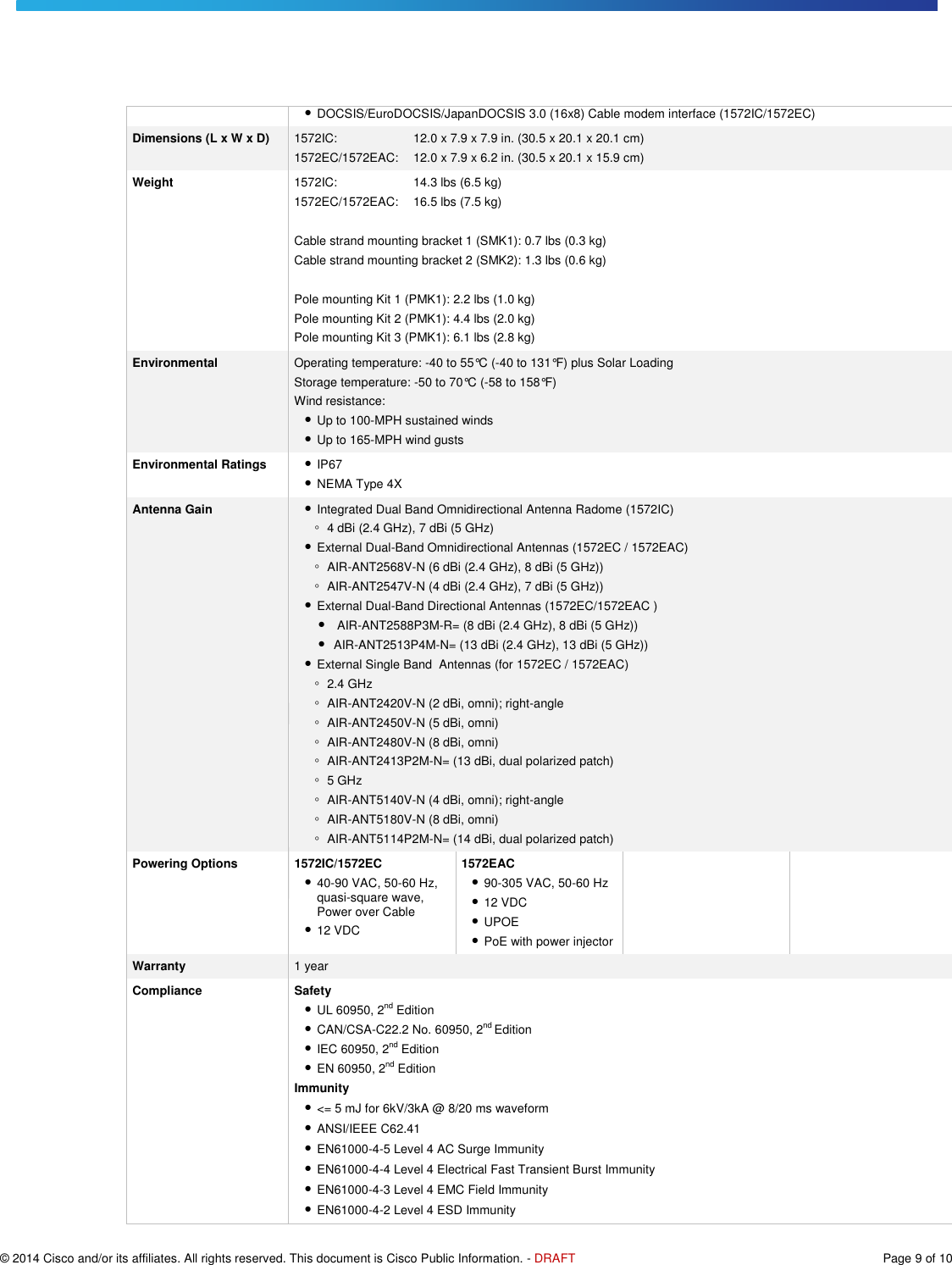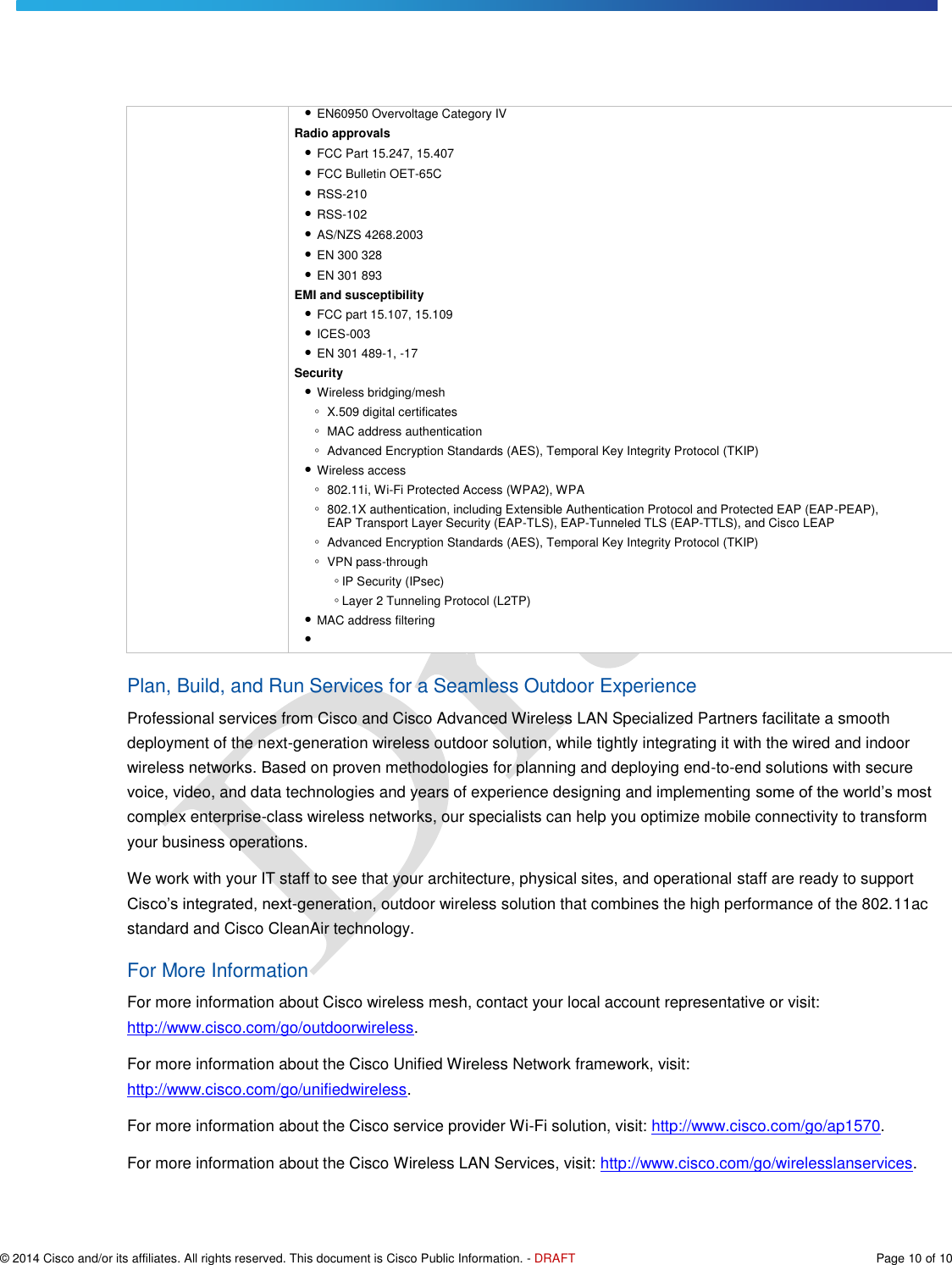Cisco Systems 102093P 1572 Series Cisco Aironet 802.11ac Dual Band Access Points User Manual MS Word 102504
Cisco Systems Inc 1572 Series Cisco Aironet 802.11ac Dual Band Access Points MS Word 102504
Contents
- 1. Cisco_Aironet 1570 Series_Datasheet
- 2. Install conditions 5600-5650 data_sheet
- 3. Install Guide AIR-AP1570 Series
Cisco_Aironet 1570 Series_Datasheet
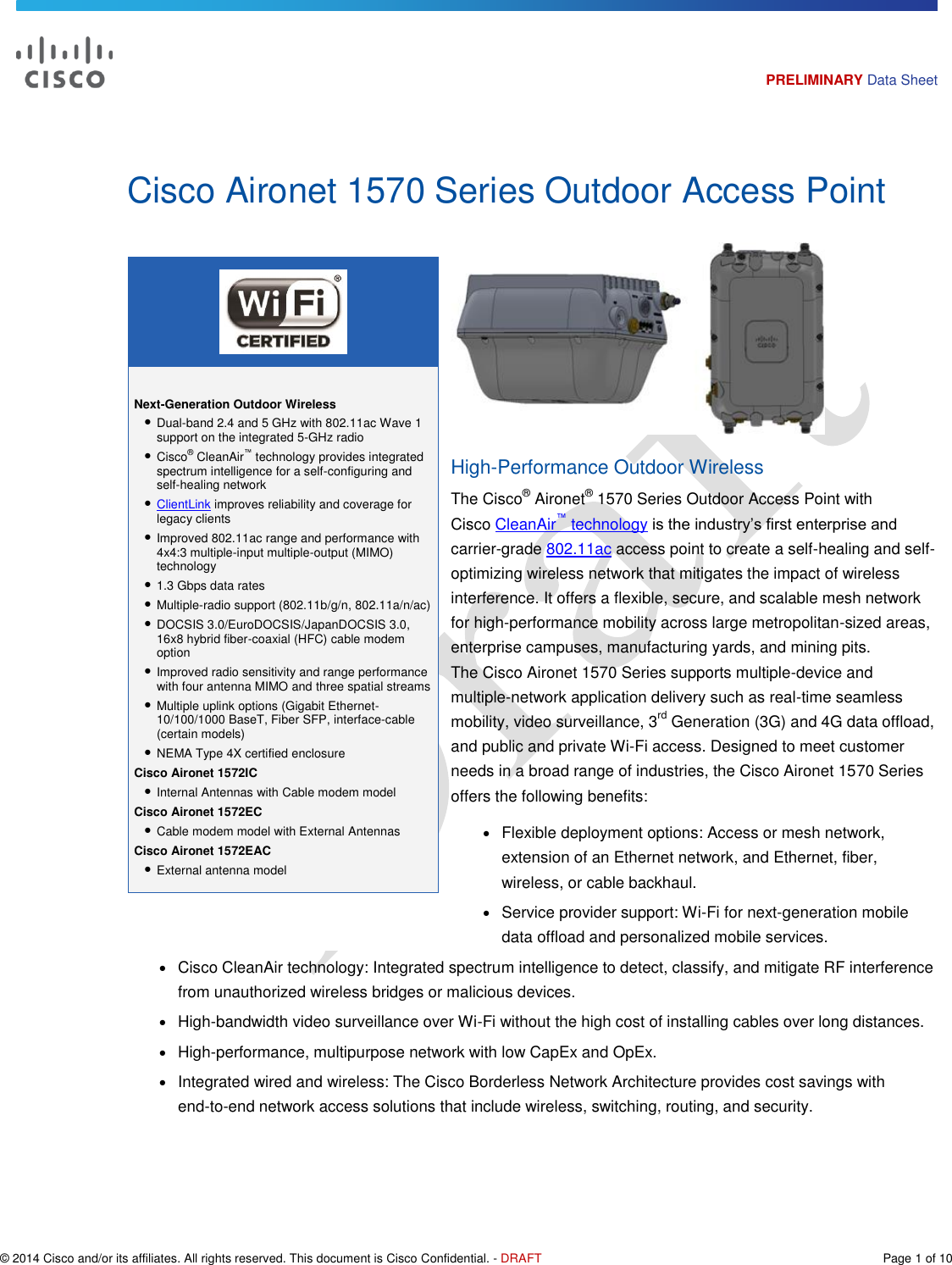
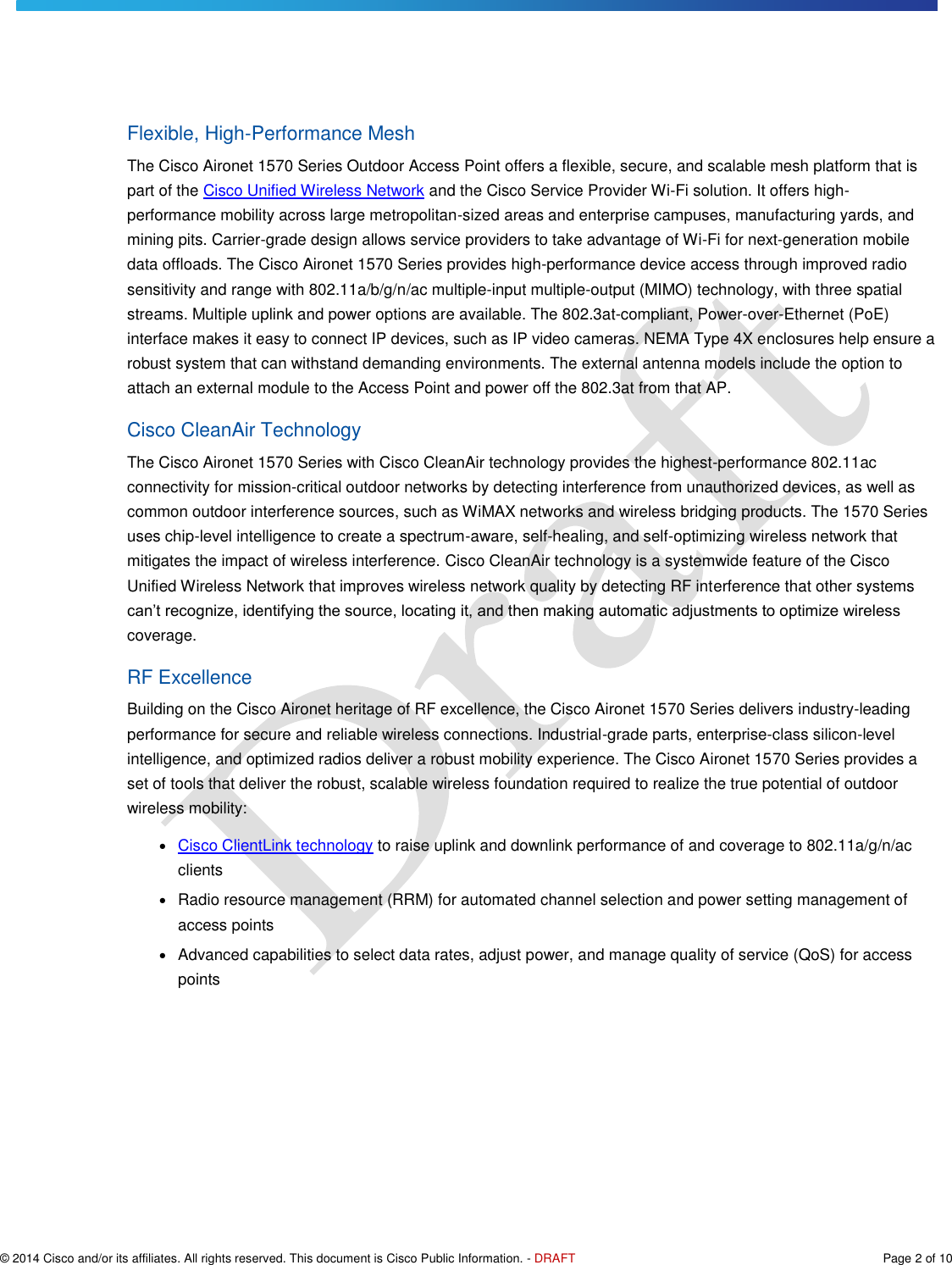
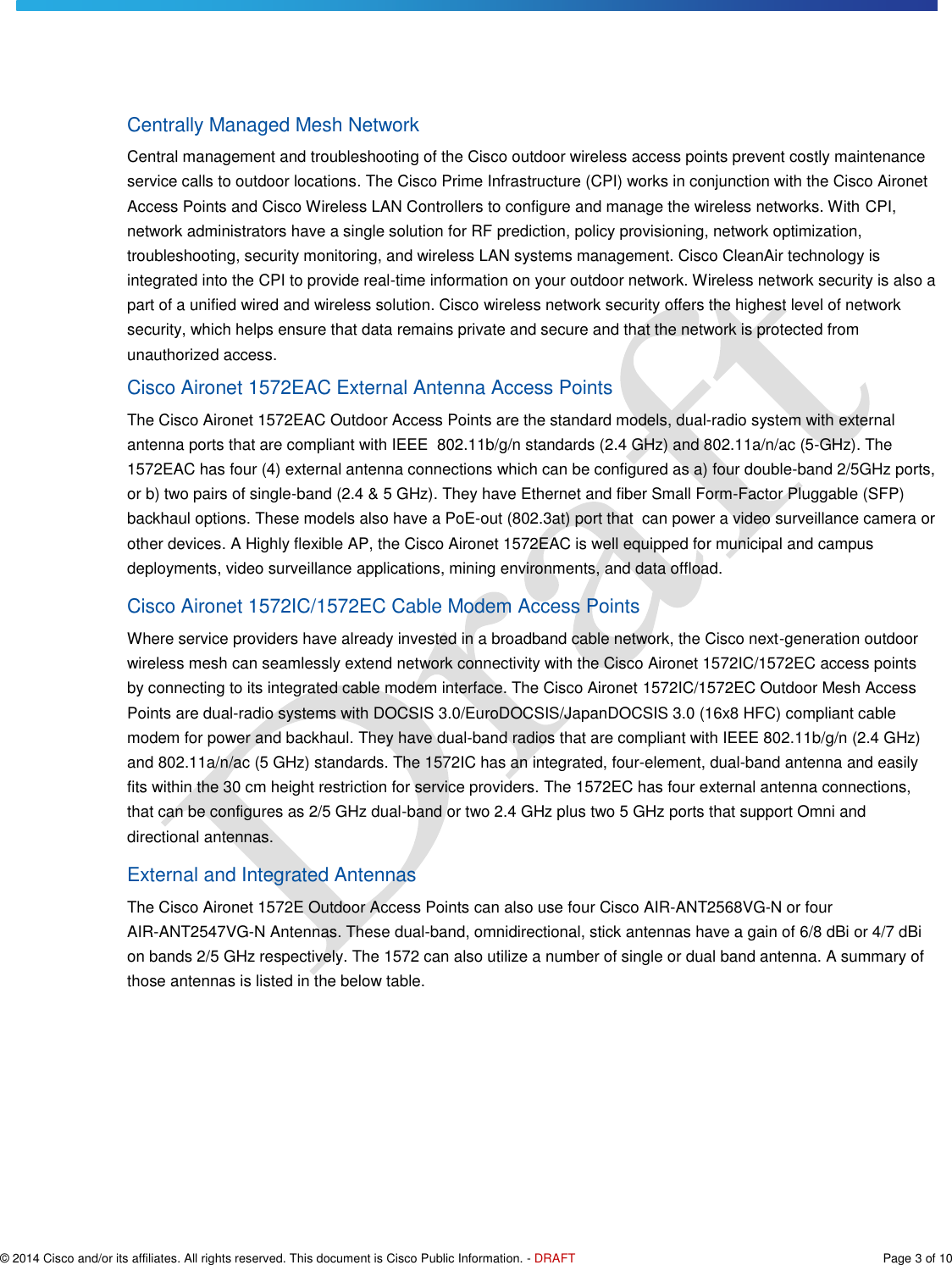
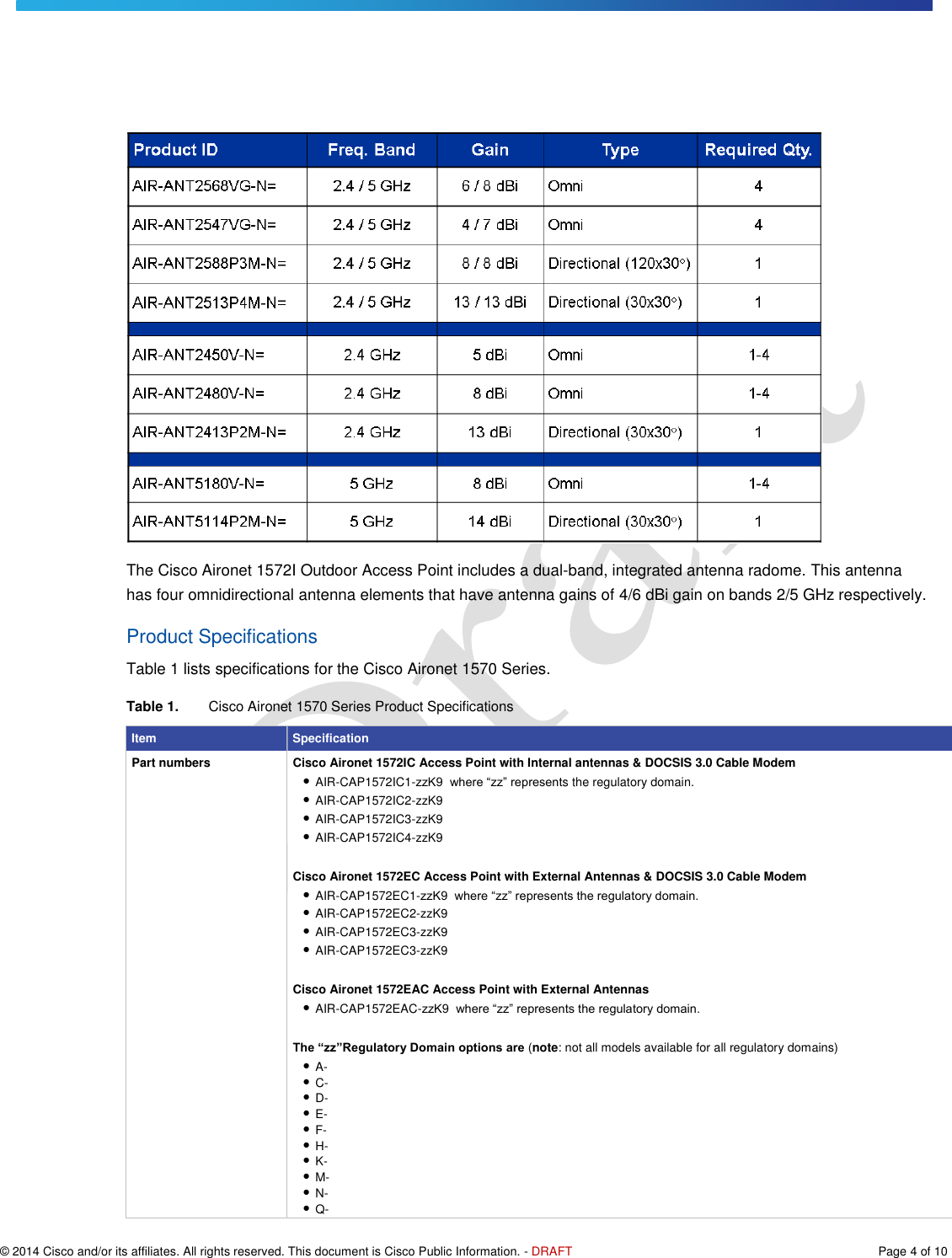
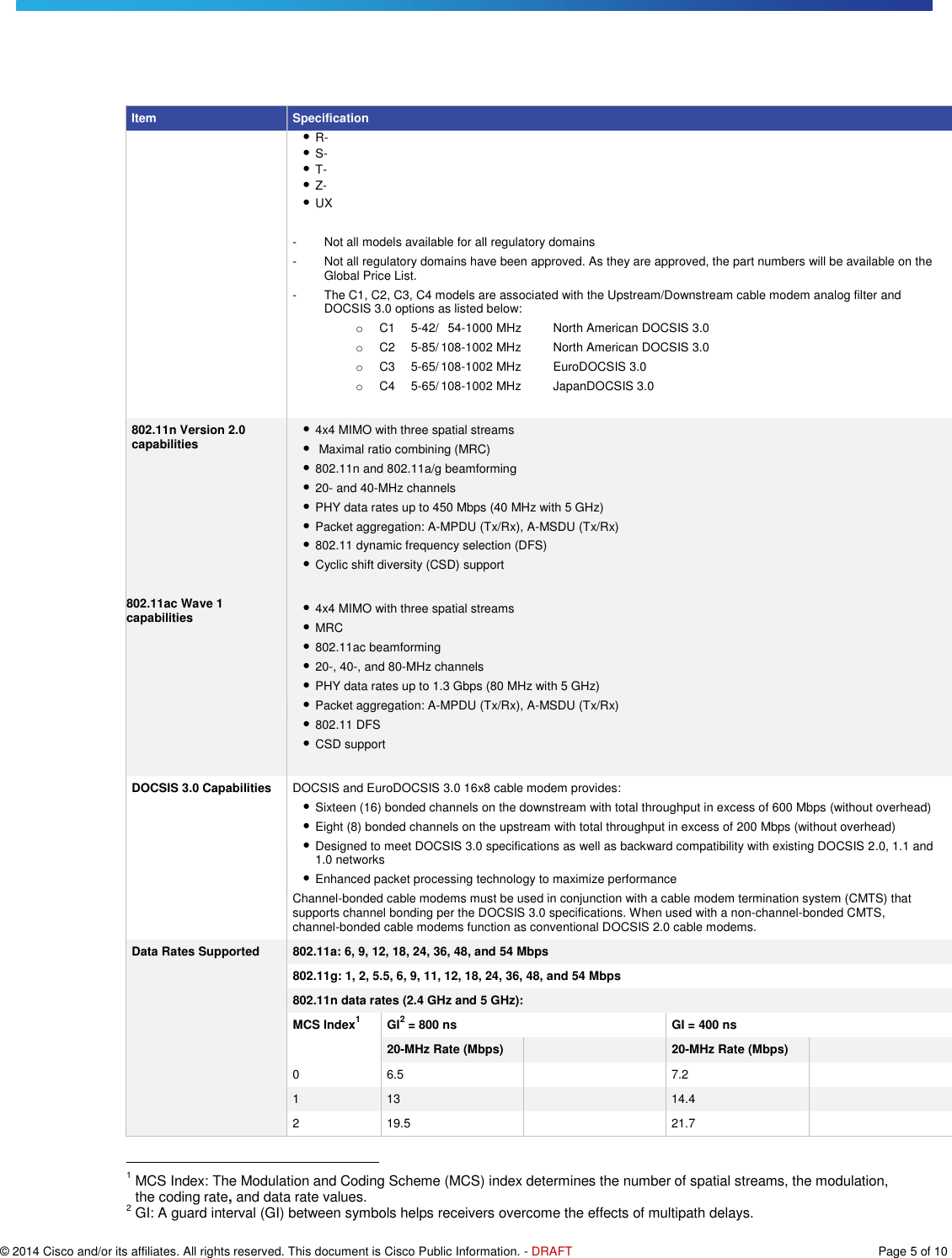
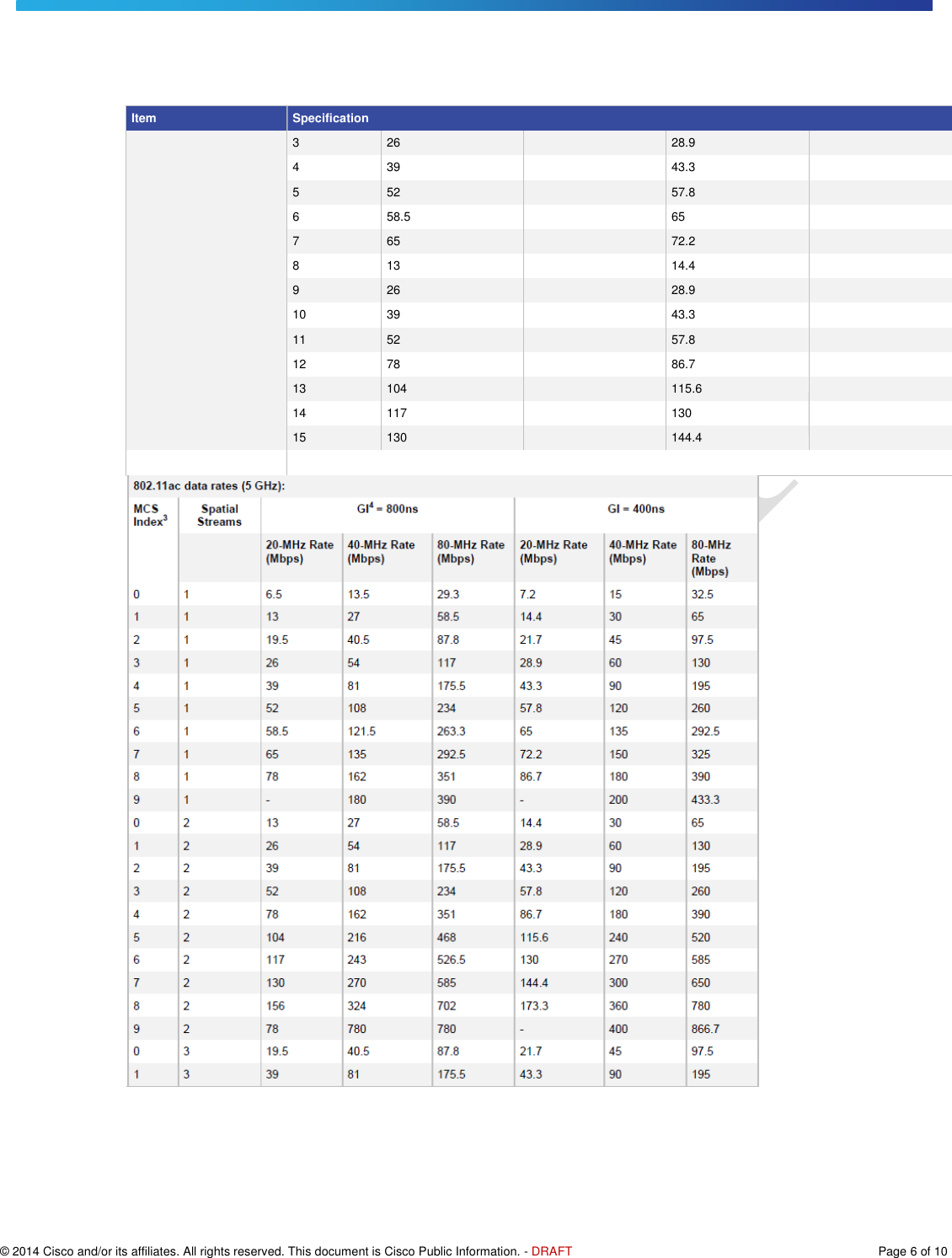
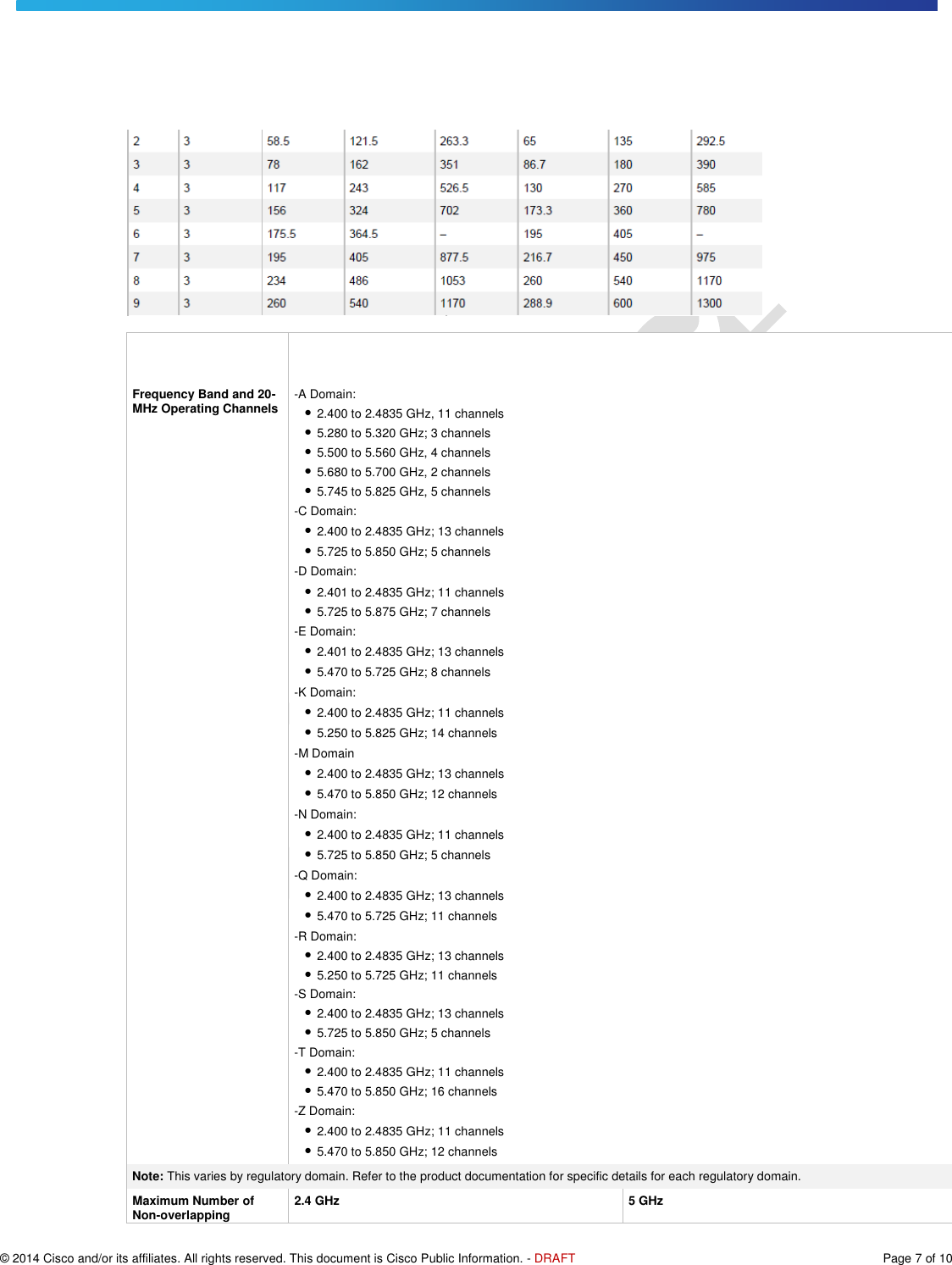
![© 2014 Cisco and/or its affiliates. All rights reserved. This document is Cisco Public Information. - DRAFT Page 8 of 10 Channels ● 802.11b/g: ◦ 20 MHz: 3 ● 802.11n: ◦ 20 MHz: 3 ● 802.11a: ◦ 20 MHz: 21 ● 802.11n: ◦ 20 MHz: 21 ◦ 40 MHz: 9 ● 802.11ac: ◦ 20 MHz: 21 ◦ 40 MHz: 9 ◦ 80 MHz: 5 Note: This varies by regulatory domain. Refer to the product documentation for specific details for each regulatory domain. Receive Sensitivity 802.11b (Complementary Code Keying [CCK]) -101 dBm @ 1 Mbps -98 dBm @ 2 Mbps -92 dBm @ 5.5 Mbps -89 dBm @ 11 Mbps 802.11g (non HT20) -94 dBm @ 6 Mbps -93 dBm @ 9 Mbps -92 dBm @ 12 Mbps -90 dBm @ 18 Mbps -86 dBm @ 24 Mbps -84 dBm @ 36 Mbps -79 dBm @ 48 Mbps -78 dBm @ 54 Mbps 802.11a (non HT20) -92 dBm @ 6 Mbps -91 dBm @ 9 Mbps -89 dBm @ 12 Mbps -87 dBm @ 18 Mbps -85 dBm @ 24 Mbps -81 dBm @ 36 Mbps -77 dBm @ 48 Mbps -76 dBm @ 54 Mbps 2.4-GHz 802.11n (HT20) -93 dBm @ MCS0 -91 dBm @ MCS1 -89 dBm @ MCS2 -86 dBm @ MCS3 -82 dBm @ MCS4 -78 dBm @ MCS5 -77 dBm @ MCS6 -75 dBm @ MCS7 -93 dBm @ MCS8 -91 dBm @ MCS9 -89 dBm @ MCS10 -86 dBm @ MCS11 -82 dBm @ MCS12 -78 dBm @ MCS13 -77 dBm @ MCS14 -75 dBm @ MCS15 5-GHz 802.11n (HT20) -92 dBm @ MCS0 -89 dBm @ MCS1 -87 dBm @ MCS2 -85 dBm @ MCS3 -81 dBm @ MCS4 -77 dBm @ MCS5 -76 dBm @ MCS6 -75 dBm @ MCS7 -90 dBm @ MCS8 -87 dBm @ MCS9 -85 dBm @ MCS10 -82 dBm @ MCS11 -78 dBm @ MCS12 -74 dBm @ MCS13 -73 dBm @ MCS14 -72 dBm @ MCS15 5-GHz 802.11n (HT40) -89 dBm @ MCS0 -86 dBm @ MCS1 -84 dBm @ MCS2 -82 dBm @ MCS3 -78 dBm @ MCS4 -74 dBm @ MCS5 -73 dBm @ MCS6 -72 dBm @ MCS7 -87 dBm @ MCS8 -84 dBm @ MCS9 -82 dBm @ MCS10 -79 dBm @ MCS11 -75 dBm @ MCS12 -71 dBm @ MCS13 -70 dBm @ MCS14 -69 dBm @ MCS15 Maximum Transmit Power 2.4 GHz ● 802.11b (CCK) ◦ 30 dBm with 4 antennas ● 802.11g (non HT duplicate mode) ◦ 30 dBm with 4 antennas ● 802.11n (HT20) ◦ 30 dBm with 4 antennas 5 GHz ● 802.11a ◦ 30 dBm with 4 antennas ● 802.11n non-HT duplicate (802.11a duplicate) mode ◦ 30 dBm with 4 antennas ● 802.11n (HT20) ◦ 30 dBm with 4 antennas ● 802.11n (HT40) ◦ 30 dBm with 4 antennas ● 802.11ac ◦ non-HT80:30 dBm, 4 antennas ◦ VHT20 30 dBm, 4 antennas ◦ VHT40: 30 dBm, 4 antennas ◦ VHT80: 30 dBm, 4 antennas ◦ VHT20-STBC: 30 dBm, 4 antennas ◦ VHT40-STBC: 30 dBm, 4 antennas ◦ VHT80-STBC: 30 dBm, 4 antennas Note: The maximum power setting will vary by channel and according to individual country regulations. Refer to the product documentation for specific details. Network Interface ● 10/100/1000BASE-T Ethernet, autosensing (RJ-45) ● Fiber SFP](https://usermanual.wiki/Cisco-Systems/102093P.Cisco-Aironet-1570-Series-Datasheet/User-Guide-2497086-Page-8.png)
